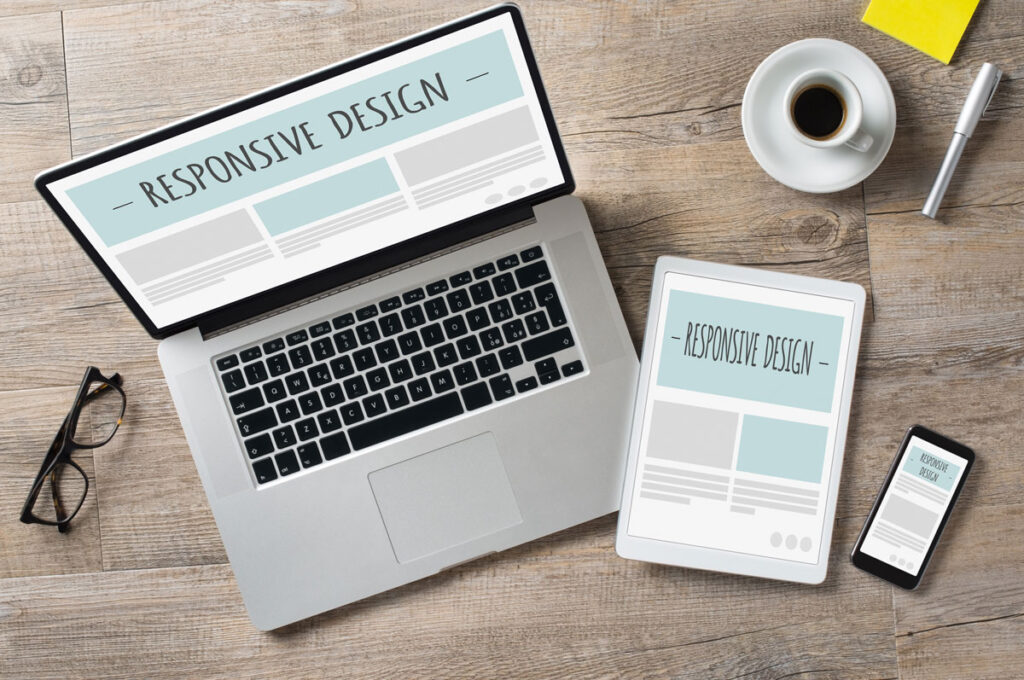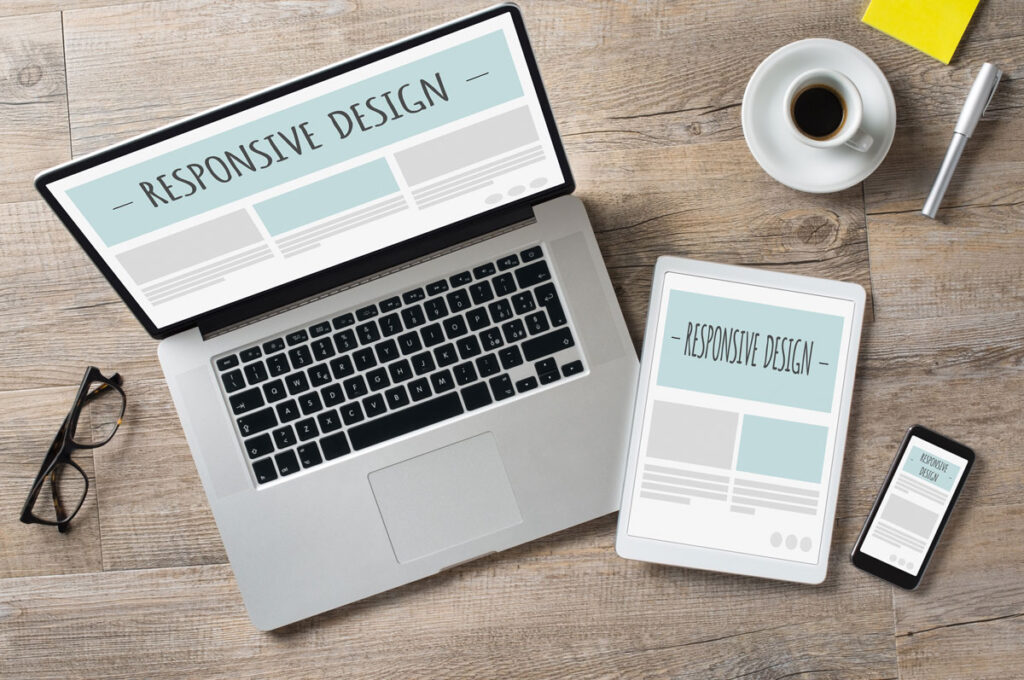Understanding the Difference: Graphic Design vs. Web Design

It is common to find confusion between the terms “graphic design” and “web design,” as both are linked to the creation of visual elements. However, they are two disciplines with different objectives, skills, and tools.

Graphic Design
- Focuses on creating images, logos, typography, and other visual elements to communicate specific messages through various media such as magazines, advertisements, posters, packaging, and books.
- The main goal of graphic design is to attract the audience’s attention and convey a message clearly and memorably.
- Requires a deep understanding of color theory, typography, composition, and consumer psychology.
Web Design
- Focuses on creating interfaces and user experiences for websites and web applications.
- The primary goal of web design is to facilitate user navigation and interaction with the website’s content.
- Requires knowledge of HTML, CSS, JavaScript, web development frameworks, and UX/UI design.
- Purpose of the article:
The purpose of this article is to clarify the differences between graphic design and web design, highlighting the specific characteristics of each discipline.
Through the provided information, the aim is to:
- Help people better understand the roles of each profession.
- Facilitate the identification of specific project needs in terms of design.
- Promote effective collaboration between graphic designers and web designers.
- By understanding the differences between these two areas, better communication and collaboration among professionals can be achieved, resulting in more successful projects.
What is Graphic Design?
Graphic design is the discipline responsible for communicating ideas and concepts through images, typography, and other visual elements. It’s an art form that combines creativity with technique to create visually appealing and informative solutions.
Graphic design is applied in a wide range of fields, including:
- Advertising: ads, billboards, brochures, catalogs, etc.
- Marketing: logos, corporate identity, packaging, web design, etc.
- Editorial: book design, magazines, newspapers, etc.
- Visual communication: infographics, presentations, signage, etc.
- Digital art: illustrations, animations, video games, etc.
The main objectives of graphic design are:
- To communicate a message clearly and effectively: Graphic design should convey desired information to the target audience in an understandable and memorable way.
- To attract attention: In a world saturated with visual information, graphic design should stand out and capture the audience’s attention.
- To create a pleasant visual experience: Graphic design should be aesthetically pleasing and provide a positive visual experience for the user.
- To persuade or influence behavior: Graphic design can be used to persuade the audience to take action, such as buying a product or donating to a cause.
Graphic designers are creative professionals with a wide range of skills, including:
- Knowledge of design principles: composition, typography, color theory, etc.
- Drawing and illustration skills: both manual and digital.
- Proficiency in design software: Adobe Photoshop, Illustrator, InDesign, etc.
- Ability to communicate ideas visually: translating abstract concepts into images and concrete designs.
- Creative and innovative thinking: the ability to generate original ideas and unique visual solutions.
- In summary, graphic design is a powerful tool that can be used to communicate ideas, inform, persuade, and create visually appealing experiences. It is an essential discipline in today’s world, present in all aspects of daily life.
What is Web Design?
Web development is a discipline that involves conceiving, building, and maintaining websites and web applications. Its central purpose lies in creating digital experiences that are functional, attractive, and effective for users.
Functionality:
- A functional website must be able to fulfill the purposes for which it was created. This includes:
- Providing information: Delivering useful and relevant content to users.
- Facilitating interaction: Allowing for smooth communication and user participation.
- Conducting transactions: Enabling users to make purchases, reservations, or other actions online.
Usability:
- A usable website should be easy to use and navigate for users. This involves:
- Having a clear and intuitive structure: Allowing users to find what they are looking for quickly and easily.
- Using simple and understandable language: Avoiding the use of technical terms and jargon that may confuse users.
- Being compatible with various devices: Adapting to the different screens and browsers used by users.
Digital Context:
- Web development must consider the digital context in which it will operate. This includes:
- The latest trends in web development: Adapting to new technologies and styles as they emerge.
- The needs of the target audience: Designing the website with the needs and expectations of users in mind.
- Business objectives: Ensuring that web development contributes to the achievement of company goals.
In summary, web development is a multifaceted process that encompasses aspects such as functionality, usability, and the digital context. The ultimate goal is to create websites and web applications that are useful, easy to use, and provide a positive digital experience for users.
Key Differences Between Graphic and Web Design
Despite sharing some similarities, graphic design and web design are two disciplines with specific characteristics and objectives.
Graphic Design:
- Focus: Creation of visual elements such as images, logos, typography, for both print and digital media.
- Objective: To attract attention, communicate ideas, and build a distinctive visual identity.
- Skills: Deep understanding of color theory, typography, composition, and consumer psychology.
- Tools: Design software such as Adobe Photoshop, Illustrator, and InDesign.
- Examples: Advertisements, posters, brochures, packaging, logos, etc.
Web Design:
- Focus: Creation of interfaces and user experiences for websites and web applications.
- Objective: To facilitate navigation and user interaction with digital content.
- Skills: Mastery of HTML, CSS, JavaScript, web development frameworks, and UX/UI design.
- Tools: Code editors, web design tools like Sketch or Figma, and frameworks like Bootstrap or Materialize.
- Examples: Websites, web applications, blogs, online stores, educational platforms, etc.
Key Differences:
- Medium: Graphic design applies to both print and digital media, while web design is limited to the digital realm.
- Objective: Graphic design primarily seeks to communicate ideas and create a visual identity, while web design focuses on usability and user interaction.
- Skills: The technical skills required for each discipline are different.
- Tools: The software and tools used also vary in each case.
- Final Products: The final products of graphic design are images, logos, and other visual elements, while web design produces websites and web applications
How Graphic and Web Design Complement Each Other
Graphic design and web design are often viewed as separate entities, but they are actually complementary disciplines that collaborate to create a cohesive and effective online presence. Let’s explore how they work together:
Establishing Visual Identity
Graphic design: Establishes the foundation for a brand’s visual identity through logos, color palettes, typography, and imagery.
Web design: Implements these established visual elements consistently throughout the website, ensuring a unified and recognizable brand experience across both online and offline channels.
Communication and User Experience
Graphic design: Creates visual elements that convey information and evoke emotions, such as infographics, icons, and illustrations.
Web design: Integrates these elements strategically within the website to enhance user experience by simplifying information, guiding navigation, and improving user engagement.
Functionality and Aesthetics
Graphic design: Focuses on the aesthetic appeal of visual elements while considering their functionality in conveying a message.
Web design: Combines aesthetic elements with technical considerations, ensuring that the website is both visually appealing and functionally sound, delivering a seamless user experience.
Storytelling and Brand Building
Graphic design: Creates visuals that tell stories and build brand narratives.
Web design: Integrates these visuals effectively within the website’s layout and functionality, reinforcing the brand story and fostering emotional connections with users.
Examples of Collaboration
- Homepage hero image: A graphic designer creates a visually captivating image that aligns with the brand’s message, while the web designer integrates it seamlessly into the website layout, considering factors like loading speed and responsiveness.
- Product icons: Graphic designers create clear and visually distinct icons for product categories, while web designers incorporate them into the website’s navigation and product listings, enhancing user understanding and interaction.
In summary, graphic design and web design collaborate to create a visually appealing, informative, and user-friendly online experience that effectively communicates a brand’s message and strengthens its online presence
Conclusion.
While graphic design and web design are distinct disciplines with their own unique goals and skillsets, they are not mutually exclusive. They complement each other by working together to create a strong and cohesive online presence.
Graphic design lays the foundation by establishing a brand’s visual identity through logos, color palettes, typography, and imagery. Web design then builds upon this foundation by implementing these elements consistently throughout the website, ensuring a unified user experience across all channels.
By combining aesthetics with functionality, both disciplines contribute to creating a website that is not only visually appealing but also easy to navigate, informative, and engaging for users. This ultimately leads to a stronger brand presence and a more successful online experience.